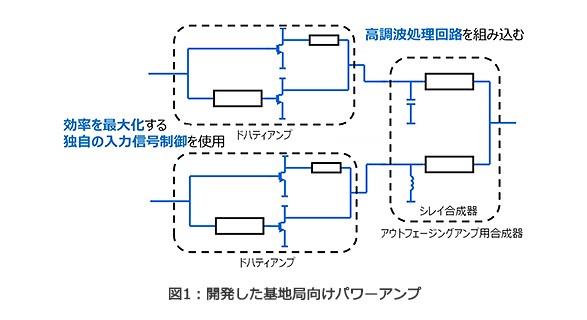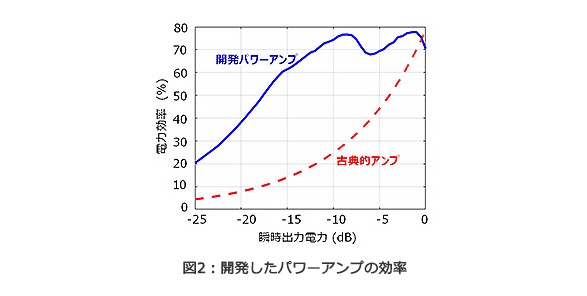

Toshiba: 5G base station, power consumption reduced by 64%-High efficiency power amplifier development
-World’s highest level, power efficiency, 5G base station, low power consumption-
Toshiba: Research and Development Center
We have developed a high efficiency power amplifier for 5G wireless base stations.
Power consumption has been reduced by 64% (compared to conventional), achieving the world’s highest level of power efficiency.
For wireless base stations: Power amplifier
A wireless signal and amplification device for transmitting from a wireless base station to a mobile phone terminal.
The power amplifier consumes a large amount of power, and the largest increase in power consumption among wireless base stations.
Power amplifier: transistor characteristics
The instantaneous output power constantly changes.
Therefore, when the instantaneous output power decreases due to the transmission signal, the power efficiency drops significantly.
5G Base Stations: The Need for Improving Power Efficiency
The 5G communication scheme needs to have a wider instantaneous output power.
In particular, when the instantaneous output power is low, improving the power efficiency has been a major issue.
Toshiba developed power amplifier:
Power efficiency and maximization achieved with two different high efficiency power amplifier configurations (original technology).
The efficiency has been further improved by optimizing the high-order and harmonic loads (Note 2).
Achieves a power efficiency of 70% even with an average power as low as one tenth of the peak power.
It operates with high power efficiency, even at low instantaneous output power.
Power consumption: reduced by 64%
We achieved 70% power efficiency for the first time in the world using a high peak modulation signal (used in 5G).
The high-efficiency power amplifier developed this time contributes to the low power consumption of 5G wireless base stations.
This related technology:
Announced June 5 (local time) at “IMS 2019” at the Boston International IEEE International Society in the United States.